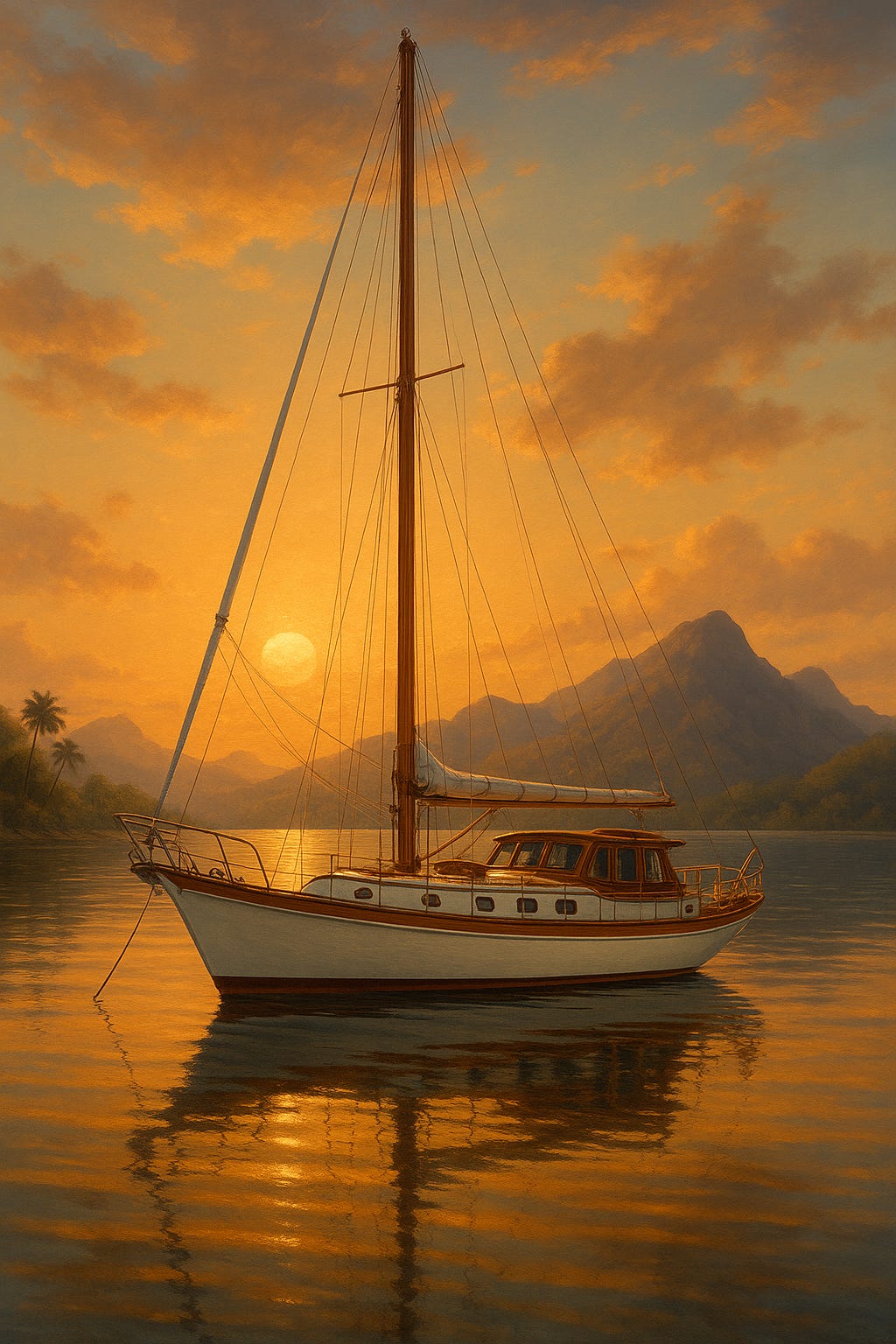Cheoy Lee Yachts: From Heritage Classics to Modern Cruising Legends (update)
Cheoy Lee Yachts: From Heritage Classics to Modern Cruising Legends
Cheoy Lee is one of the most storied names in yachting, with a legacy that stretches back over a century. Founded in Hong Kong in the late 1800s, this family-run boatbuilder evolved from crafting steam-powered vessels to becoming a pioneer in fiberglass yacht design. For many boating enthusiasts and collectors, a Cheoy Lee yacht is more than just a vessel—it's a piece of maritime history.
In this blog, we explore the legacy of Cheoy Lee, highlight some of their most iconic models, examine their modern lineup, and offer insight into why these yachts have become cult favorites among collectors and bluewater cruisers alike.
1. A Heritage Rooted in Innovation
Cheoy Lee Shipyards was founded in 1870 in Shanghai before relocating to Hong Kong in 1936. While initially focused on commercial vessels, the company shifted toward recreational yachts in the 1950s and 60s. This pivot coincided with a revolution in materials: Cheoy Lee was one of the earliest adopters of fiberglass construction.
By the 1970s, the company had earned a reputation for blending traditional styling—like teak interiors and clipper bows—with modern hull technologies. They collaborated with renowned naval architects such as Arthur Robb, Charles Wittholz, and Ray Richards.
2. Classic Models for Collectors
Many classic Cheoy Lee yachts from the 1960s to the 1980s are highly sought-after today. These include:
- Offshore 40: Designed by Ray Richards, this bluewater-capable sloop or ketch is famous for its seaworthiness and solid construction.
- Clipper 36: A trawler-style motor yacht perfect for coastal cruising, featuring a raised pilothouse and Portuguese bridge.
- Cheoy Lee 42/43 Motorsailer: A hybrid design blending sailing capabilities with power cruising comfort.
- Lionship and Luders 36: These sailboats reflected classic lines, full keels, and robust materials.
Classic Cheoy Lees are renowned for their thick fiberglass hulls, rich teak joinery, and handcrafted details—making them ideal for restoration enthusiasts.
3. Modern Yachts: The Global, Bravo, and Explorer Series
Cheoy Lee didn’t stop innovating. Today, their shipyard in Zhuhai, China produces some of the most advanced semi-custom yachts in the 60' to 150'+ range.
- Bravo Series (72-88 feet): Designed with Michael Peters Yacht Design, these sleek, performance-oriented motoryachts combine efficiency and luxury.
- Explorer Series (90-132 feet): Built for long-range cruising, these expedition-style yachts are fully capable of transoceanic voyages.
- Global Series (100-150 feet): Cheoy Lee’s superyacht line, featuring cutting-edge naval architecture, composite materials, and lavish interiors.
Modern Cheoy Lee yachts incorporate resin-infusion technology, advanced soundproofing, and hull designs optimized for fuel efficiency.
4. Restoration Culture and Maintenance Insights
Classic Cheoy Lees often require major overhauls, especially in decks, rigging, and interior varnish. However, their robust hulls make them ideal candidates for restoration. Common upgrades include:
- Replacing teak decks with synthetic alternatives
- Rewiring electrical systems
- Installing modern navigation and autopilot gear
- Upgrading fuel and plumbing systems
Owners often document their restoration journeys online, and there is a supportive community of Cheoy Lee enthusiasts on forums like CruisersForum and SailNet.
5. Investment and Resale Trends
While classic Cheoy Lees aren’t typically high-flip investment assets, they hold value remarkably well when maintained. A restored Offshore 40 or Clipper 36 can command $60,000 to $120,000 depending on condition. Their "cult classic" status gives them an edge over generic production cruisers.
In contrast, newer Bravo or Explorer series yachts often appreciate post-build due to high customization and scarcity. Cheoy Lee’s resale values are bolstered by strong build reputations and limited annual output.
6. How Cheoy Lee Compares to Other Iconic Builders
Compared to similar brands:
- Grand Banks: Also offers trawler-style vessels, but emphasizes production volume and lighter wood trim. Cheoy Lee tends to be more overbuilt.
- Hatteras: Known for rugged sportfishers and motoryachts, but lacks Cheoy Lee’s sailing pedigree.
- Fleming Yachts: More modern and luxurious, Fleming competes with Cheoy Lee’s upper-tier Bravo and Explorer lines.
Where Cheoy Lee wins is in its fusion of heritage styling, quality craftsmanship, and consistent innovation.
7. Conclusion: Why Cheoy Lee Endures
From teak-laden sailboats of the 1970s to carbon-infused superyachts of today, Cheoy Lee has demonstrated remarkable adaptability. Their boats attract sailors, cruisers, and collectors who value quality and lineage.
Whether you're restoring a Clipper 36 or commissioning a 132-foot Explorer, owning a Cheoy Lee means owning a piece of yacht-building history—and joining a legacy that spans oceans and centuries.

